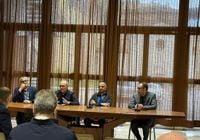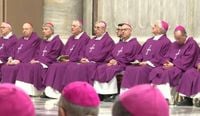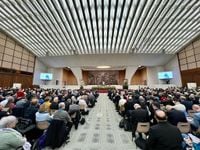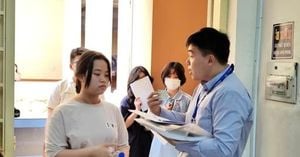The Second Synodal Assembly of the Churches in Italy is currently underway in Rome, marking a significant moment in the Catholic Church's journey towards greater engagement and understanding. This assembly, which commenced on April 1, 2025, in the Vatican, is a culmination of efforts to foster dialogue and reflection among the various dioceses across the country. With 975 participants representing 219 dioceses, the assembly seeks to conclude the 'Prophetic Phase' of the synodal process, highlighting the importance of collective input from the Church's diverse communities.
Cardinal Matteo Zuppi, the president of the Italian Bishops' Conference (CEI), opened the assembly with a message from Pope Francis, emphasizing the need for a Church that listens and responds to the realities of modern society. During the initial sessions, audio excerpts were shared from Zuppi, as well as from Monsignor Erio Castellucci, president of the National Committee for the Synodal Path. Their remarks set the tone for the discussions, which aim to address pressing issues facing the Church today.
One of the critical topics on the agenda is the alarming decline in Italy's birth rate, which has reached a historic low. According to recent Istat data, the fertility rate in 2024 was recorded at just 1.18 children per woman, raising concerns among family associations about the implications for future generations. Adriano Bordignon, president of the Forum of Family Associations, has called for structural policies to support families and encourage higher birth rates, underscoring the urgency of the situation.
As the assembly progresses, participants are engaging with 50 Propositions collected under the theme "Perché la gioia sia piena" (Why Joy Should Be Full). However, the reception of these proposals has not been entirely positive. Many attendees have criticized both the content and the methodology behind the Propositions, suggesting that they lack transparency and do not align with the synodal style that Pope Francis has advocated for the Church. The disconnect between the Propositions and the actual needs of the community has raised alarms among church leaders and laypeople alike.
In a striking commentary, Monsignor Castellucci referred to the Propositions as a "document of passage," indicating a recognition that while they may represent a step in the synodal process, they fall short of capturing the richness of the discussions that have taken place. He expressed concern that the current leadership of the Italian Church may be out of touch with the realities faced by its congregants, particularly the youth. Castellucci's remarks reflect a broader sentiment among attendees who feel that the Church must move beyond rhetoric and engage more authentically with the lives of its members.
Critics have pointed out that the Propositions seem to be disconnected from the vibrant and dynamic nature of the Church's mission. They argue that the focus should shift towards understanding the lived experiences of individuals, especially young people, rather than creating artificial spaces for them to feel included. The assembly's discussions have highlighted the need for the Church to be present in the everyday lives of its members, to listen to their voices, and to recognize the signs of the Kingdom that exist even outside traditional church settings.
The sentiment of disillusionment among some church leaders is palpable, with fears that the current approach may alienate those who still hold a deep commitment to the faith. As the assembly continues, there is a pressing need for the CEI to reconsider its strategies and embrace a more inclusive and responsive model of Church leadership. The strong reactions against the Propositions may serve as a wake-up call for the Italian Church, prompting a reevaluation of how it engages with its faithful.
In summary, the Second Synodal Assembly of the Churches in Italy represents a critical juncture for the Catholic Church in the country. With pressing social issues like declining birth rates and a growing disconnect between church leadership and congregants, the assembly's outcomes could have lasting implications for the future of the Church. As participants engage in open dialogue, the hope is that the assembly will lead to a renewed sense of purpose and connection within the community, fostering a Church that is truly reflective of the joy and hope found in the Gospel.







